Comments / Questions (35)
![]() Judy wrote:
Judy wrote:
Ready to start chart 1 and I have 136 stitches...when I leave 5 stitches in main colour for the steeks, I do not have an multiple of 8 stitches for the repeats
01.09.2021 - 14:35DROPS Design answered:
Dear Judy, pattern is not supposed to be symetrical, repeat the 8 stitches all the row and finish with the first 3 sts in last repeat. When working M.2 pattern will be then symetrical (you will have the first 3 sts in M.2 on each side of the 5 steek stitches). Happy knitting!
02.09.2021 - 16:41
![]() Kathie wrote:
Kathie wrote:
Hi. I am currently making the hat from this pattern. My concern is with the finishing of the hat. The pattern requires 26 rows of stockinette stitch followed by a purl row before commencing the charts for the band of the hat. The finished product clearly does not have 27 rows before the design section. Do those rows form a hem. I love the outfit and want to get it right. Can you help please.
18.06.2021 - 17:11DROPS Design answered:
Dear Katie, this is a rather old pattern of ours. But yes, the first 27 row of stockinett is turned inwards and sewn in, amiking a double , extra warm edge for the hat. Happy Stitching!
19.06.2021 - 00:28
![]() Lucy Wright wrote:
Lucy Wright wrote:
What does reverse stockinette stitch mean in the hat pattern and how do you fold the first bit ? Thanks
27.12.2020 - 00:14DROPS Design answered:
Hi Lucy, Reverse stockinette means that the purled side is on the right side when the hat is finished. Happy knitting!
28.12.2020 - 07:52
![]() Adela wrote:
Adela wrote:
Thank you for your reply. Of course, I had tried that before asking. I might not have expressed myself precisely enough, wanting to politely ask for uploading the pattern adult variation provided that it existed. Happy you had time to answer anyway. :-) I wish you all the best!
08.12.2020 - 10:25
![]() Adela wrote:
Adela wrote:
Hi, I'm a beginner who's just made her first sweater (with a Norwegian pattern). This one is lovely! Is there any variation of this one for an adult, moreover, not a cardigan? I'm not experienced enough to adjust it with the pattern itself. Thank you
07.12.2020 - 22:35DROPS Design answered:
Hi Adela, You can search for adult jumpers with Nordic pattern in the search-box top right of the page. Happy knitting!
08.12.2020 - 07:06
![]() Daria wrote:
Daria wrote:
Forsto aldri hva en mener med å strikke vrangen på retten og når luen skal brettes? Står jo bare felling etter 19 cm og så ferdig... skuffende og unødvendig bruk av tid og garnet
23.11.2020 - 20:36
![]() Riikka wrote:
Riikka wrote:
Onko tässä villatakin mallissa myös muiden kuin minun mielestäni virhe? En voi ymmärtää, että luodaan 152 silmukkaa, josta 5 silmukkaa menee aukileikkaussilmukoihin, jolloin jää enää 147 silmukkaa, ja tämä pitäisi olla jaollinen 8:lla. Onko ehdotuksia, miten tästä selviää?
12.12.2012 - 18:13DROPS Design answered:
Hei! Voit joko neuloa piirroksen M.1 mallineuletta, niin pitkälle kun silmukoita riittää. Halutessasi voit luoda 2 s vähemmin työn alkuun, jolloin työhön tulee vain kokonaisia mallikertoja. Lisää tällöin nämä 2 s ennen kuin aloitat piirroksen M.3 mallineuleen.
09.01.2013 - 15:07Torhild wrote:
Ad luen. Etter mønsteret er ferdigstrikket står det noe om at det strikke videre på vrangen? Bildet viser glattstrikk. Er det feil beskrivelse? Ps. Det har sneket seg inn en del upassende kommentarer som kanskje bør fjernes!
21.11.2012 - 11:56DROPS Design answered:
[13:29:56] Tine Jensen: Det er korrekt, du skal strikke glatstrik med vrangen ud. Naar du er faerdig skal kanten foldes om og du faar glatstrik paa ydersiden. Vi skal slette de kommentarer! Tak for det.
21.11.2012 - 13:56Maria wrote:
Hvor er den overraskende flot, sikke god idé!
02.06.2006 - 21:34
![]() Hanne Larsen wrote:
Hanne Larsen wrote:
Hvor finder jeg opskriften til denne model? Hilsen Hanne
04.05.2006 - 09:56
Tiny Mountaineer#tinymountaineerset |
||||||||||
|
|
||||||||||
Cardigan, trousers and hat in Camelia or BabyMerino with stars and squares.
DROPS Baby 6-14 |
||||||||||
|
CARDIGAN Finished measurements: 54-60-66 (74-80-86) cm [21.25" - 23-5/8" - 26" (29-1/8" - 31.5" - 33-7/8")] Pattern: See charts. (1 chart = 1 repeat). The pattern is seen from the right side and is knit entirely in stockinette st. Rib: *knit 1, purl 1*. Repeat from * - *. Body: Knit the cardigan in the round on circular needles with steeks cut up for armholes and center front. Cast on 136-152-168 (184-200-216) sts (the first 5 sts are the steek sts - these sts should not be knit into the pattern) on smaller circular needles with brown, join and place a marker at the join. Knit 4 rows stockinette st, then with right side facing, change to yellow/orange, knit 1 row, purl 1 row (for the folding-edge - measure the work from here). Knit Pattern 1, keeping the first 5 sts for the center front steek not in pattern. Change to larger circular needles and knit Pattern 2. When the work measures 23-22-26 (25-27-26) cm [9" - 8-5/8" - 10.25" (9-7/8" - 10-5/8" - 10.25")], knit the next row as follows: 5 steek sts, 33-37-41 (45-49-53) sts for the front, inc 5 sts for armhole steek, 64-72-80 (88-96-104) sts for the back, inc 5 sts for armhole steek, 34-38-42 (46-50-54) sts for the front, (the increased sts are for the steeks and should not be knit into the pattern). When the work measures 29-29-33 (33-37-37) cm [11-3/8" - 11-3/8" - 13" (13" - 14.5" - 14.5")], bind off for the neck on the front, bind off: 8-9-10 (12-13-14) sts before the marker, 5 steek sts, 9-10-11 (13-14-15) sts after the steek sts. Knit the rest back and forth on the needles. Bind off at the neck edge every other row: 2 sts 2 times, 1 st 1 time. When the work measures approx. 31-31-36 (36-41- 41) cm [12.25" - 12.25" - 14-1/8" (14-1/8" - 16-1/8" - 16-1/8")] (adjust to obtain a whole square of Pattern 2), knit Pattern 3 and at the same time bind off the center 18-20-22 (26-28-30) sts for the back neck. Bind off at each back neck edge: 2 sts 1 time, 1 st 1 time. After Pattern 3 knit 1 row yellow/orange and bind off, the work measures approx. 33-33-38 (38-43-43) cm [13" - 13" - 14-7/8" (14-7/8" - 16-7/8" - 16-7/8")]. Sleeves: Cast on 40-44-44 (48-48-52) sts on smaller double pointed needles with brown, join and place a marker at the join. Knit 4 rows stockinette st, change to yellow/orange, knit 1 row stockinette st (right side facing), purl 1 row (for the folding-edge - measure the work from here). Knit Pattern 1. Change to larger double pointed needles and knit stockinette st with brown. At the same time inc 1 st each side of marker: 4-4-7 (7-14-15) times: Sizes 0/3 mos. + 2 years: every 8th row Size 6/9 mos.: every 9th row Size 12/18 mos.: every 7th row Size 3/4 years: alternately every 4th and 5th row Size 5/6 years: every 5th row = 48-52-58 (62-76-82) sts. At the same time, when the work measures 12-15-17 (19-22-26) cm [4.75" - 5-7/8" - 6.75" (7.5" - 8-5/8" - 10.25")], knit Pattern 3, then knit 1 row yellow. The work measures approx. 14-17-19 (21-24-28) cm [5.5" - 6.75" - 7.5" (8.25" - 9.5" - 11")]. Change to brown, knit 2 cm [0.75"] reverse stockinette st for a seam allowance over the cut edge on the body, bind off. Assembly: Sew a marker thread down into the center of the steek sts on each side and in the center front. Sew two machine seams around the marker thread, 1st seam = 1/2 stitch from the marker thread, 2nd seam = 1/2 stitch from the 1st seam. Cut up for armholes and in the center front. Sew shoulder seams. Pick up approx. 73-73-85 (93-105-113) sts (divisible by 4 sts + 1 st) with brown on smaller needle along the left front and knit Pattern 3, purl 1 row (for the folding-edge), change to brown, knit 5 rows stockinette st, bind off and fold the edge over double against the wrong side and sew. Now work a row of single crochet (sc) with yellow/orange down along the folding-edge of the placket. Repeat along the right front, but replace 3 sc with 3 chain sts for buttonholes evenly distributed - 6-6-7 (7-8-8) times. Pick up approx. 70-110 sts around the neck on smaller needle with brown and knit 4 rows stockinette st, purl 1 row (for the folding edge), 3 rows stockinette st, bind off and fold over double against the wrong side and sew. Sew the sleeves to the body from the right side as follows: Sew alternately 1 st in the last row of knitting on the sleeve before the seam allowance and 1 st on the body after the machine seam. Turn the cardigan inside out and sew the seam allowance from the sleeve over the cut edge on the body by hand. Sew on buttons. TROUSER Size: Entire length = 38-42-47 (52-58-64) cm [14-7/8" - 16.5" - 18.5" (20.5" - 22-7/8" 25.25")] Leg length = 18-22-25 (27-35-41) cm [7" - 8-5/8" - 9-7/8" (10-5/8" - 13.75" - 16-1/8")] DROPS 2.5 mm [US 1] and 3 mm [US 2] circular needles and double pointed needles, or sizes needed to obtain correct gauge. Gauge: 24 sts and 32 rows on larger needle in stockinette st = 10 x 10 cm [4" x 4"]. Pattern: See charts. (1 chart = 1 repeat). The pattern is seen from the right side and is knit entirely in stockinette st. Border: Knit 3 cm [1.25"] stockinette st, purl 1 row (for the folding edge), knit 3 cm [1.25"] stockinette st. Left leg: Cast on 68-76-76 (84-84-84) sts on smaller double pointed needles with yellow/orange; join and place a marker at the join. Knit 5 rows stockinette st, purl 1 row (for the folding edge - measure the work from here), then knit Pattern 1. Change to larger double pointed needles and brown and knit stockinette st. At the same time inc 1 st each side of marker 4-3-3 (3-3-3) times every 2-3-4 (5-7-9) cm [every 0.75" - 1.25" - 1.5" (2" - 2.75" - 3.5")] = 76-82-82 (90-90-90) sts. When the work measures 17-21-24 (26-34-40) cm [6.75" - 8.25" - 9.5" (10.25" - 13-3/8" - 15.75")], divide it at the marker for the inside of the leg and knit the rest back and forth on the needles. Inc 1 st on each side for seam = 78-84-84 (92-92-92) sts. When the work measures 18-22-25 (27-35-41) cm [7" - 8-5/8" - 9-7/8" (10-5/8" - 13.75" - 16-1/8")] bind off 4-6-3 (4-4-4) sts on each side = 70-72-78 (84-84-84) sts. Put the work aside. Right leg: Knit like the left. Trouser: Put the right and left leg together on the same larger circular needles; join and place a marker at the joins = 140-144-156 (168-168-168) sts. Knit 3 rows and then inc 1 st on each side of the marker in the center back (two sts in from the marker) every other row 6 times, then every 4th row 2 times. At the same time dec 1 st on each side of the marker at the center front (1 st in from the marker) every other row 6 times, then every 4th row 2 times = 140-144-156 (168-168-168) sts. When the work measures 35-39-44 (49-55-61) cm [13.75" - 15.25" - 17.25" (19.25" - 21-5/8" - 24")], dec 20-24-30 (28-28-28) sts evenly distributed across the row = 120-120-126 (140-140-140) sts. Change to smaller needles and knit border, bind off all sts. The work measures approx. 38-42-47 (52-58-64) cm [14-7/8" - 16.5" - 18.5" (20.5" - 22-7/8" - 25.25")]. Sew together the inside of each leg up to the bound off sts and then sew together the opening between the legs from the center front to the center of the back on the trouser. Fold all edges double against the wrong side and sew. Pull an appropriate length of elastic through the seam. HAT Circumference: 40-40-46 (46-53-53) cm [15.75" -15.75" -18-1/8" (18-1/8" -20-7/8" -20-7/8")] DROPS 3 mm [US 2] double pointed needles, or size needed to obtain correct gauge. Gauge: 24 sts and 32 rows in stockinette st = 10 x 10 cm [4" x 4"]. Pattern: See charts . (1 chart = 1 repeat). The pattern is seen from the right side and is knit entirely in stockinette st. Hat: Cast on 96-96-112 (112-128-128) sts on double pointed needles with yellow/orange; join and place a marker at the join. Knit 26 rows stockinette st, purl 1 row, knit Pattern 1, then Pattern 4, then Pattern 3. Measure the work from here. Now knit the rest in reverse stockinette st. When the work measures 15-16-17 (18-19-20) cm [5-7/8" - 6.25" - 6.75" (7" - 7.5" - 7-7/8")] put 8 markers evenly distributed on the row. Decrease by knitting 2 sts together after each marker (= 8 decreases per row). Repeat decreasing until 16 sts remain. Pull a doubled strand of yarn through the remaining sts. Make a pompon of brown, yellow/orange and naturale / off white (approx. 5 cm [2"] in diameter) and attach it to the top. |
||||||||||
Diagram explanations |
||||||||||
|
||||||||||
 |
||||||||||
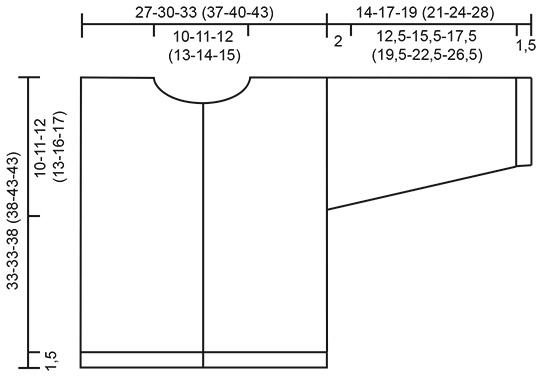 |
||||||||||
Have you finished this pattern?Tag your pictures with #dropspattern #tinymountaineerset or submit them to the #dropsfan gallery. Do you need help with this pattern?You'll find 29 tutorial videos, a Comments/Questions area and more by visiting the pattern on garnstudio.com. © 1982-2025 DROPS Design A/S. We reserve all rights. This document, including all its sub-sections, has copyrights. Read more about what you can do with our patterns at the bottom of each pattern on our site. |
||||||||||










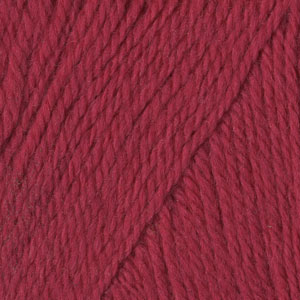


















































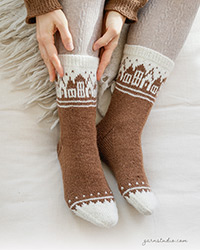

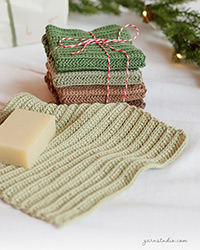


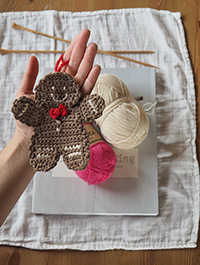
Post a comment to pattern DROPS Baby 6-14
We would love to hear what you have to say about this pattern!
If you want to leave a question, please make sure you select the correct category in the form below, to speed up the answering process. Required fields are marked *.